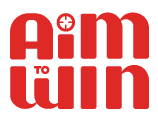Lori Michele Leavitt, “The Pivot Catalyst”, has coached, consulted, and trained hundreds of leaders around the world to achieve their objectives and generate extraordinary momentum. Her teachings guide leaders to generate positive influence throughout their organizations, strengthen alignment, and catalyze momentum. In today’s episode, we discuss ways to drive organizational change, ways to make changes stick, and why clarity is a leader’s most important skill.
Who is Lori Leavitt?
Lori Michele Leavitt, “The Pivot Catalyst”, has coached, consulted, and trained hundreds of leaders around the world to achieve their objectives and generate extraordinary momentum. She speaks globally on catalyzing momentum, leading, pivoting, and workplace culture change. She also leads the 10x!® business and leadership private peer advisory groups. Her books are part of the “Orchestrating Extraordinary Momentum” (The Pivot) Series. Lori and her books guide leaders in generating a ripple of positive influence throughout their organizations, to strengthen alignment and catalyze momentum.
Who is a Pivot Catalyst?
The term “pivot” quickly became a buzzword during the pandemic, with business owners needing to change their businesses significantly. However, what people need to realize is that pivots are not fast. The pandemic made it possible to speed things up, but pivots generally take time. Yes, the decision to change something is fast. But the realization that you need to change is not fast. Becoming aware that you need to change is not fast. And getting the intended results from a particular change is rarely fast.
As a pivot catalyst, Lori helps leaders make better decisions and create a culture where others can also choose to change. Dramatic changes require many shifts by many people over a long period of time. It’s the leader’s role to address the culture and ensure that everyone is ready to change when needed.
Why Clarity is Very Important in Leadership
A lot of things go into making change happen. You cannot just wake up one morning, throw a bunch of strategies together and assume people will follow your process and be successful at it. According to Lori, the first step to driving change is clarity. A leader’s most important duty is to create clarity for themselves and their people. Without it, satisfaction decreases, complacency sets in, productivity suffers, and turnover increases.
Leaders need clarity to execute the company’s vision. It gives a clear understanding of the goal, what to do to reach it, and what obstacles the team may face on the path to achieving that goal. The challenge most leaders face is translating their vision into a strategy communicating how to achieve a particular goal. Confused teams struggle to achieve their goals. They get distracted by low-priority tasks, so deadlines slip and quality suffers.
Ways to Make Changes Stick
If you thought driving change was hard, you don’t know about making them stick. It’s way easier to show up, teach a few skills, implement one or two strategies, and call it a day. But implementing change and making it stick is a whole other story. You see, change occurs only when people adopt new behaviors. The bigger the change, the greater the effort needed to sustain the change long-term.
So how can you ensure that changes stick?
- Step one is to check in with yourself. It has to start with you as a leader. Do you even feel inspired by the change? How can you expect others to be inspired in their roles if your role does not even inspire you?
- Another step is clarity. You need to be very clear with your goals to drive change. Sometimes, that can mean going away and making time for yourself. Take a pause; this can even be walks around a lake or in the park. This pause allows you to have time to think and get clear about critical things.
What is Talent Adaptability?
As a leader, are you skilled at predicting future talent requirements? Can your organization collaborate effectively across all perceived or real organizational struggles? According to Lori, most leaders are not. They don’t know what they’re going to need in the future or what needs to change to achieve organizational success. Talent adaptability is having an idea of where you’re headed and how you might inspire others to change or take on a new skill set.
The first step to this crucial organizational element is leaders need to hire managers skilled at predicting future talent requirements. The second step is team members and individuals across the organization must be able to collaborate and share resources effectively. Commitment is key in this step. Remember, commitment is so much more powerful than compliance. You’re not going to get performance breakthroughs with people complying with what they think you want.
Resources Mentioned In Show:
Lori’s LinkedIn
Pivot to Clarity: Get Clear, for You. Be Clear, for Others by Lori Michele Leavitt

